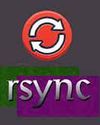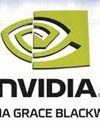
Contributing to free and open source projects is one of the best things a budding software engineer can do to oneself. Like with internships, you get to learn a lot and meet brilliant people. You populate your CV with the names of important projects, and they appear on your public GitHub profile in case someone is trying to cross-check, even though your contribution was just a typo fix. Finally, you feel worthy because you improved something that others clearly benefit from, and feel proud that you acted instead of merely complaining.
It is partly due to my involvement with free software that I was able to solve some peculiar problems at work and excel in some tests at school easily while my peers were trying hard. If a person like me–whose contributions to others’ projects have always been very minimal–feels like this, imagine how it’d change the life of someone who contributes seriously.
Just before getting into the how-to part, let me remind you that you shouldn’t be hyper-focused on external contributions to the point that you don’t have any projects of your own. It’s not about control. If you have any disagreements with the owners of a project, you can easily fork the project because it is free software. You cannot revoke your contributions, but you might be able to reuse them. The real problem is that, if you are a mere contributor, chances are you’ll end up being an expert in some narrow area. On the other hand, if you start and grow projects on your own, you can learn everything — from programming to packaging and branding to marketing.
Please don’t be discouraged by this tip. I want you to keep it in mind because contributing to free software can be addictive!
What does contribution mean?
Diese Geschichte stammt aus der September 2024-Ausgabe von Open Source For You.
Starten Sie Ihre 7-tägige kostenlose Testversion von Magzter GOLD, um auf Tausende kuratierte Premium-Storys sowie über 8.000 Zeitschriften und Zeitungen zuzugreifen.
Bereits Abonnent ? Anmelden
Diese Geschichte stammt aus der September 2024-Ausgabe von Open Source For You.
Starten Sie Ihre 7-tägige kostenlose Testversion von Magzter GOLD, um auf Tausende kuratierte Premium-Storys sowie über 8.000 Zeitschriften und Zeitungen zuzugreifen.
Bereits Abonnent? Anmelden

Red Hat unveils Red Hat OpenShift Virtualization Engine
Red Hat OpenShift Virtualization Engine is a new edition of Red Hat OpenShift that offers a dedicated solution for organisations to leverage the virtualisation capabilities already available within Red Hat OpenShift.

Spring AI: A Door to GenAI Heaven for Java Developers
Let's explore the Spring AI framework and its advantages, and look at how it is helping Java developers adopt AI.

Significant security vulnerabilities drive the release of Rsync 3.4
Rsync, the widely used utility for incremental file transfers and synchronisation, has released version 3.4. This update isn't packed with exciting new features but is instead critical due to several newly disclosed security vulnerabilities.

NVIDIA puts Grace Blackwell at every AI developer's fingertips
NVIDIA has introduced NVIDIA Project DIGITS, a groundbreaking personal AI supercomputer designed to empower AI researchers, data scientists, and students NVIDIA® NVIDIA GRACE BLACKWELL with the immense capabilities of the NVIDIA Grace Blackwell platform.

Top Tools for DevOps, Cybersecurity, and Cloud Management in 2025
In 2025, organisations will continue to rely on open source tools to retain a competitive edge. We look at why the best tools for DevOps, cybersecurity and cloud management will remain relevant and how best to integrate them into your organisation.

CREW: Open source platform to improve human-AI interaction
As human-AI collaboration deepens, critical questions arise: How should humans and AI complement one another? What kind of feedback enhances AI training? How can trust in AI be optimised to balance collaboration without over-reliance? Researchers at Duke University are addressing these challenges through CREW-an innovative platform designed to advance human-AI teaming.

Red Hat completes the acquisition of Neural Magic
Red Hat, Inc., has announced the completion of its acquisition of Neural Magic, a trailblazer in software and algorithms that accelerate generative AI (GenAI) inference workloads.

The Do's and Don'ts for Software Architects
Here's a list of best practices for software architects as well as the common mistakes they should try not to fall prey to.

openSUSE's Tumbleweed introduces Wayland support for the LXQt desktop environment
The openSUSE Project has announced that its Tumbleweed rolling release distribution now includes Wayland support for users of the LXQt desktop environment.

A Guide for Software Architects: Common Mistakes and Best Practices
Software architects play an invaluable role in the digital transformation of an organisation. To make a mark, they must imbibe certain qualities and avoid common errors.